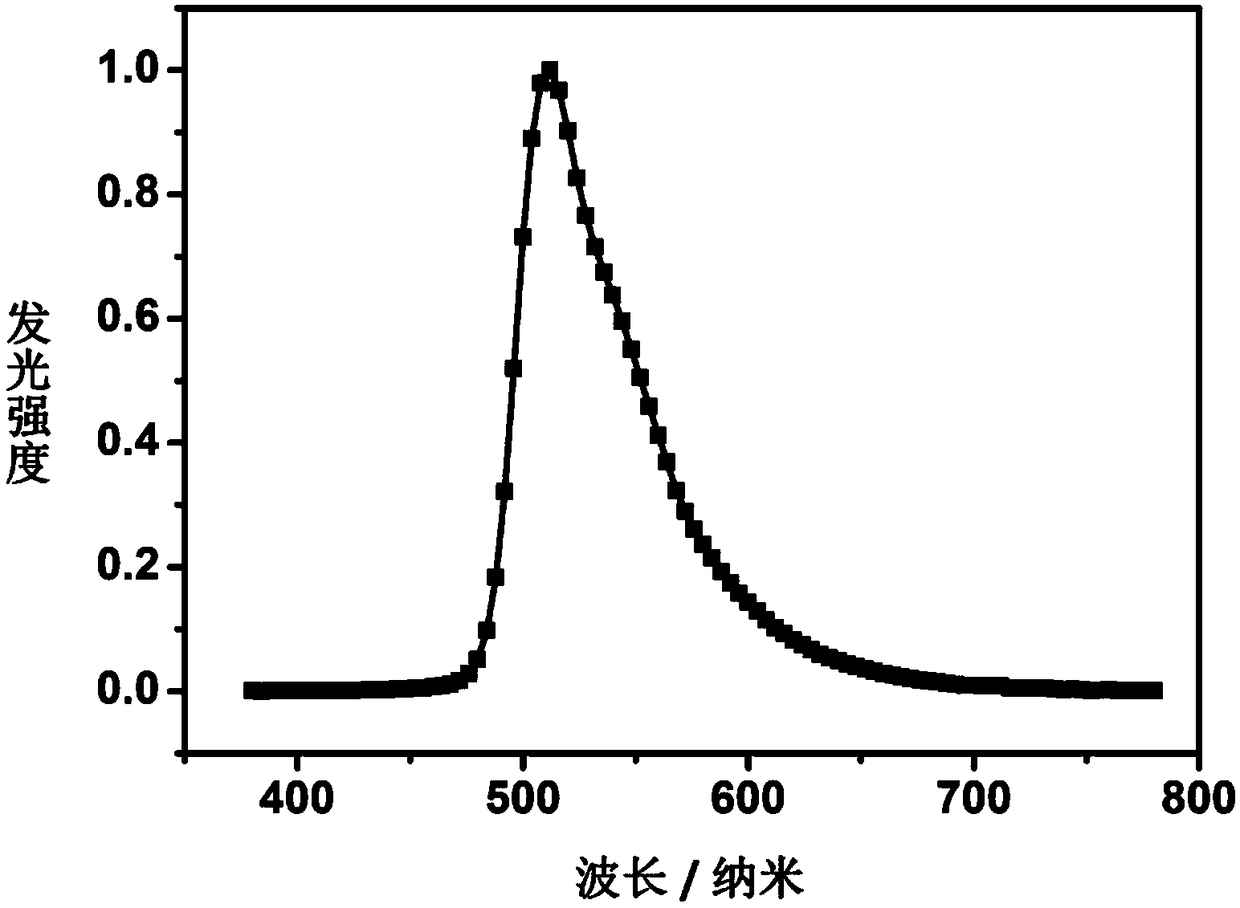Organic light-emitting material with distorted molecular structure, and application thereof to organic electroluminescence device
A technology of electroluminescent devices and molecular structures, applied in the direction of luminescent materials, electric solid devices, organic chemistry, etc., can solve the problems of production cost reduction
- Summary
- Abstract
- Description
- Claims
- Application Information
AI Technical Summary
Problems solved by technology
Method used
Image
Examples
Embodiment 1
[0025] Embodiment 1: the synthesis of compound 1:
[0026]
[0027] Add phenanthrenequinone (0.42g, 2mmol), biphenyl-2,2'-dicarbaldehyde (0.42g, 2mmol), aniline (0.77g, 10mmol), ammonium acetate (0.62g, 8mmol), and acetic acid (10mL) into three ports bottle, N 2Under protection, heat and reflux in an oil bath at 130°C for 3 hours to stop the reaction, pour the reaction mixture into distilled water, stir and filter, the obtained gray filter cake is washed with water, glacial acetic acid, and ethanol in sequence, and after drying, an off-white powder is obtained, which is then analyzed by column chromatography Method separation (silica gel, dichloromethane) gave the target product 1 (1.27 g, yield 86%) as a white powder. The molecular ion mass determined by mass spectrometry is: 738.42 (calculated value: 738.28); theoretical element content (%) C 54 h 34 N 4 : C, 87.78; H, 4.64; N, 7.58, measured element content (%): C, 87.89; H, 4.60; N, 7.53. The above analysis results...
Embodiment 2
[0028] Embodiment 2: the synthesis of compound 2:
[0029]
[0030] According to the synthesis of compound 1, the steps are the same, and compound aniline is replaced by compound 4-methoxyaniline to obtain white powder compound 2 (1.33g, yield 83%), and the molecular ion mass determined by mass spectrometry is: 798.52 (calculated value For: 798.30); theoretical element content (%) C 56 h 38 N 4 o 2 : C, 84.19; H, 4.79; N, 7.01; Measured element content (%): C, 84.25; H, 4.85; N, 6.95. The above analysis results indicated that the obtained product was the expected product.
Embodiment 3
[0031] Embodiment 3: the synthesis of compound 3:
[0032]
[0033] According to the synthesis of compound 1, the steps are the same, and compound aniline is replaced by compound 3-methoxyaniline to obtain white powder compound 3 (1.28g, yield 80%), and the molecular ion mass determined by mass spectrometry is: 798.48 (calculated value For: 798.30); theoretical element content (%) C 56 h 38 N 4 o 2 : C, 84.19; H, 4.79; N, 7.01; Measured element content (%): C, 84.23; H, 4.83; N, 6.96. The above analysis results indicated that the obtained product was the expected product.
PUM
| Property | Measurement | Unit |
|---|---|---|
| thickness | aaaaa | aaaaa |
| thickness | aaaaa | aaaaa |
| current efficiency | aaaaa | aaaaa |
Abstract
Description
Claims
Application Information
 Login to View More
Login to View More - R&D
- Intellectual Property
- Life Sciences
- Materials
- Tech Scout
- Unparalleled Data Quality
- Higher Quality Content
- 60% Fewer Hallucinations
Browse by: Latest US Patents, China's latest patents, Technical Efficacy Thesaurus, Application Domain, Technology Topic, Popular Technical Reports.
© 2025 PatSnap. All rights reserved.Legal|Privacy policy|Modern Slavery Act Transparency Statement|Sitemap|About US| Contact US: help@patsnap.com



